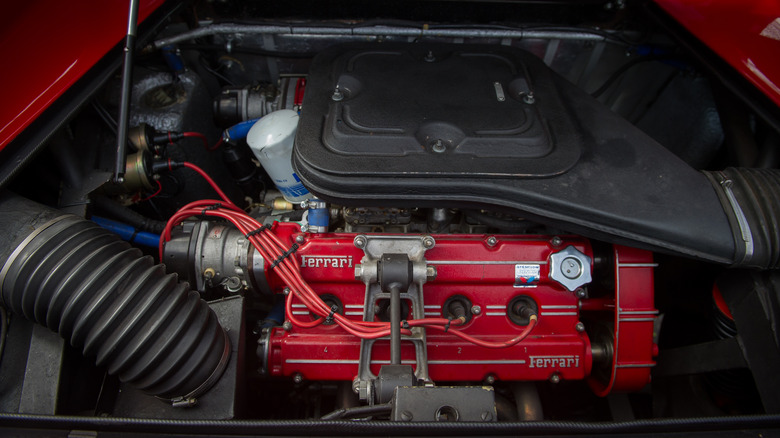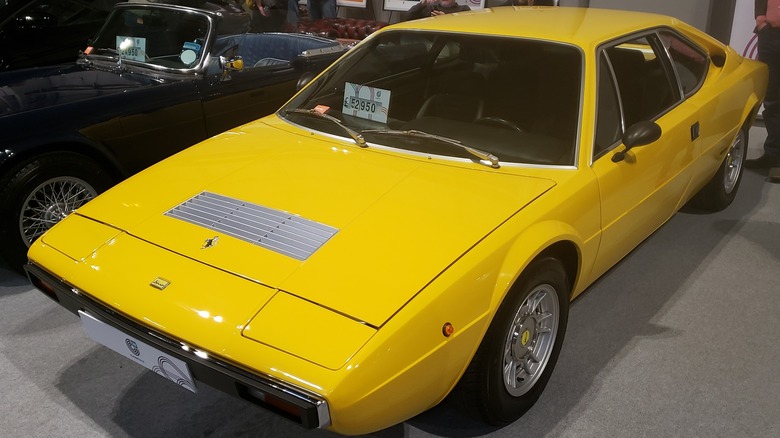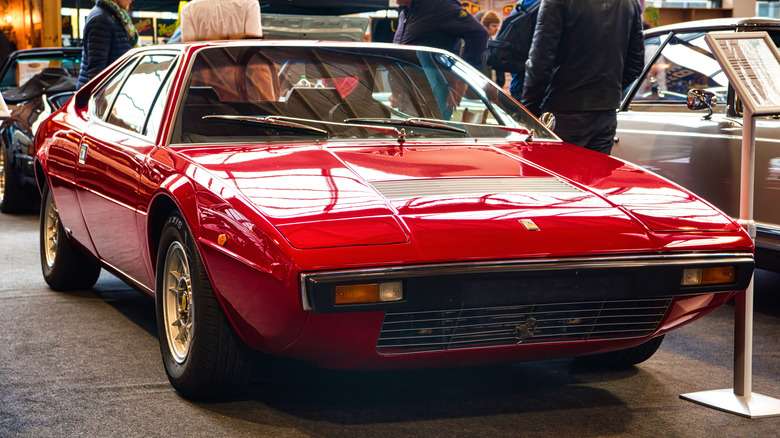Why This Model Is Considered The Worst Ferrari Engine Ever Made
Just the mention of the name Ferrari is enough to get any motoring enthusiast's immediate attention. The Italian giant is one of the most revered names in motoring and motorsport history. Ever since the very first Ferrari 125S emerged from the company's famed Maranello factory in 1947, the marque has never been shy of producing high-performance cars that are as beautiful as they are expensive.
However, even manufacturers with a rich heritage like Ferrari can get things wrong on occasion. So it is with the case of the Ferrari F106C 000 engine — a two-liter V8 engine that failed to live up to the badge. But just what inspired Ferrari to produce such an engine — and was it as bad as all that? To understand this, we need to have a look at the political climate of the time and what Ferrari was aiming for with the engine.
The engine was developed for the Ferrari Dino 208 GT4, by Ferrari's admission, one of the most unusual cars in its history. This was a mid-'70s project developed solely for the Italian market. However, it was also designed at a time when the Italian Government was heavily taxing engine sizes over 2 liters. The result was a 2-liter V8 engine that revved to 7,700 rpm, producing — and let's be kind — an underwhelming 170 hp. It's also fair to say that the car it was built for also failed to inspire and is one of the slowest Ferrari models.
Ferrari 106 C 000: when downsizing fails
The problem with the F106 C 000 engine can be at least partially attributed to its need to live up to Ferrari's reputation. This wasn't a dreadful engine; it just happened to be the worst that Ferrari ever made. After all, there always has to be one. The Ferrari Dino 208 GT4 was the car that necessitated the engine. This was a slimmed-down version of the Dino 308 GT4 that was to be exclusively designed for the Italian market (the "30" part of the name refers to the engine size and the "8" refers to the number of cylinders).
One of the major differences between the 208 and the 308 was the engine, with the 208 reduced to 2 liters to avoid the heavy taxes on engines above this size. The engine was developed by simply reducing the bore of the 3-liter engine. The result was the smallest production V8 ever. Interestingly, the 308 engine on which the 208 was based was Ferrari's first ever V8, so both these engines hold a place in motoring folklore.
The 208 engine — or F106 C 000 to give it its official title — had a 90-degree cylinder configuration, with twin overhead camshafts, and four twin choke Weber carburetors. So far, so good. After all, being a small engine doesn't necessarily mean being a bad engine. Let's explore why the 208 is considered Ferrari's worst engine.
Why the F106 C 000 is Ferrari's worst engine
Think Ferrari and you probably think of growling supercars or a signature red F1 car hurtling round a track at breakneck speeds. The F106 C 000 doesn't fit comfortably in this bracket. To be fair to the engine, neither does the car it was designed for, a point highlighted by its dismal last place in our poll of the worst Ferrari models. Indeed, when it was launched in 1975, it wasn't even badged as a Ferrari. Rather, the 208 was part of the "Dino" badged cars. These were named after Enzo Ferrari's son, who'd died tragically young. However, full "Ferrari" status was awarded to the car and engine at the end of 1976.
In the end, the major gripe with this engine is power. While both the 208 and 308 powerplants revved up to 7,700 rpm, the 308's engine managed to produce a decent 255 hp. By contrast, the downsized F106 C engine could only manage a paltry 170 hp. Not quite a "Dino-saur" but hardly up to Ferrari's reputation as a manufacturer of performance cars. Ultimately, it was an engine that suffered from a political decision to tax bigger engines. Ferrari, it should be said, is not the only European motoring heavyweight to miss the mark with an engine. BMW's problematic N47 engine is another example of where otherwise rock-solid manufacturers get it wrong.


